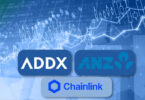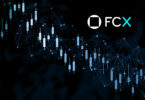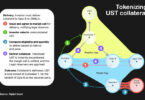Digital Asset’s DAML smart contract language works on most enterprise blockchain platforms and several databases. But the goal the company is working towards is blockchain interoperability.
It’s worth remembering that the company is backed by a slew of heavyweights in both the technical (VMWare, Salesforce, Samsung, IBM, Accenture) and capital markets space (ASX, Broadridge, Citi, Deutsche Börse, DTCC, JP Morgan, Goldman Sachs).
DAML currently offers the ability to write an application that can work on multiple distributed ledger technology (DLT) platforms, which is a huge benefit. For applications that leverage DAML, in future blockchain interoperability will enable a workflow to move across blockchain networks and tokens to move between them.
“From day one, we were very driven by the vision that there needs to be a network of networks,” said Digital Asset’s CTO and co-founder Shaul Kfir. “If we build larger data silos, that’s not what we, as an industry, set out to build (but) that is what’s happening.”
One of the real prizes would be to get some homogeneity across securities exchanges, an area where Digital Asset is very active.
“As you know, we’re working with equities markets around the globe, and they all want to move towards this direction of much more interoperability and standardization between them. And that’s where we can help,” said Kfir.
Digital Asset is working on projects with the Australian Securities Exchange and the Hong Kong Exchange (HKEX). In Japan, the Nomura/SBI securities venture BOOSTRY is using DAML and others have publicly acknowledged trialing the technology, including the Singapore Exchange and the DTCC.
“If you look at how securities or the simplest assets in the capital markets work, the tokens are not always equivalent, even for the same type of security. And we found that tokens are a very restrictive model,” said Kfir.
He complimented derivatives standards body ISDA, which developed the Common Domain Model (CDM) as a standard not just for data but also for workflow. However, derivatives markets tend to be relatively international, whereas most stock markets are more local and hence standardization may prove more of a challenge.
Last week the World Federation of Exchanges highlighted the need for a token taxonomy.
As blockchain starts to mature, there is an increasing demand for one blockchain to interoperate with another. A stopgap is to use conventional APIs, but is less desirable because it’s a centralized approach. As a result, there are numerous initiatives in this space, which we previously reviewed.
In the enterprise sector, one high profile initiative is the Hyperlerdger Cactus protocol initiated by Accenture and Fujitsu. Others include Overledger and Clearmatic’s ION. In the public blockchain sphere, there is Cosmos and soon to go-live Polkadot.
So the race for blockchain interoperability is truly on. The fact that Digital Asset is now willing to talk about the topic (we asked last year) may be a sign that it won’t be too long before it joins the race.






